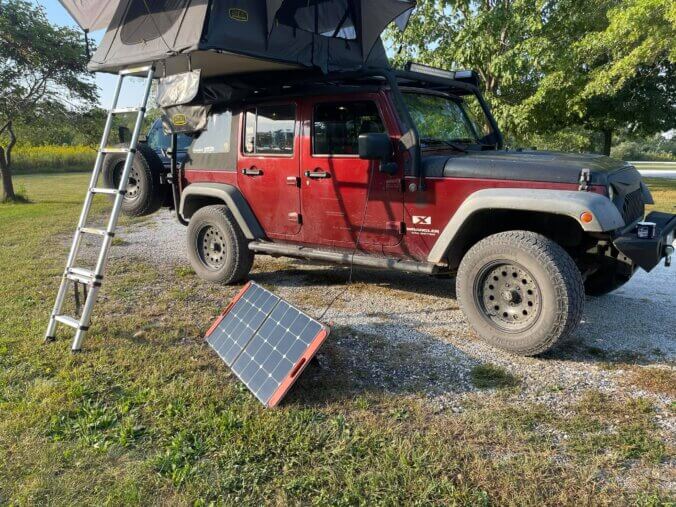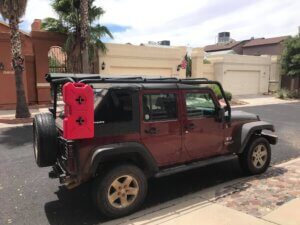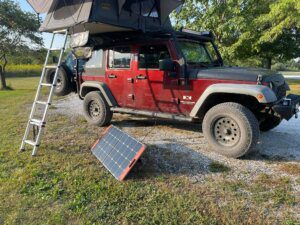The weekend is coming, and we’re preparing for a trip. Time to load up the adventure mobile and hit the road. Car camping is fun, and having ample gear space is convenient. But do you know your vehicle’s weight limit? Most people won’t come close to that weight, but what about when you load up the family, dogs, and gear? And what about all the gear on the roof rack? Is it safe if you’ve added tents, racks, and accessories? I’m not an expert on the subject, but I’ve spoken to professionals and researched specifically for my vehicle. Consult a professional if you have safety concerns or questions about your vehicle.
How to Determine Your Vehicle’s Payload
1. Check Your Vehicle’s Manual
The first step in determining your vehicle’s payload capacity is to refer to the owner’s manual. Manufacturers provide detailed information about the maximum allowable payload in this essential document. Look for the “Gross Vehicle Weight Rating” (GVWR) or “Maximum Loaded Vehicle Weight” section. The GVWR is the total weight limit, including the vehicle, passengers, cargo, and any additional equipment. The manual will specify the payload capacity and any other relevant guidelines.
2. Calculate the Curb Weight
You need to know your vehicle’s curb weight to determine the available payload. The curb weight represents the vehicle’s total weight without any passengers or cargo. You can find this information in the owner’s manual or by checking the manufacturer’s website. Remember that curb weight may vary depending on optional features or trim levels. Subtract the curb weight from the GVWR to obtain the payload capacity.
3. Account for Passengers
Next, consider the weight of the passengers who will be traveling in your vehicle. Take into account the number of occupants and their approximate weight. It’s essential to factor in not only the driver but also any passengers who will be joining you on your journey. Add the total passenger weight to the payload capacity calculated in the previous step.
4. Include Luggage and Cargo
Now it’s time to estimate the weight of your luggage and any additional cargo you plan to carry. Consider the items you’ll transport, such as suitcases, camping gear, or tools. Remember that payload capacity includes both the weight inside the vehicle and any load on roof racks or towing attachments. Ensure that the combined weight of passengers, luggage, and cargo does not exceed the calculated payload capacity.
5. Be Mindful of Towing or Trailer Weight
If you plan to tow a trailer or attach any additional equipment, it’s crucial to account for their weight. Refer to your vehicle’s manual for the maximum towing capacity and subtract this weight from the remaining payload capacity. Overloading the vehicle or exceeding its towing capacity can decrease stability and control, compromising safety.
6. Consult a Professional if Needed
If you have specific concerns or questions about determining your vehicle’s payload capacity, it’s always advisable to consult a qualified mechanic or contact the manufacturer’s customer service. They can provide accurate and personalized guidance based on your vehicle’s specifications, ensuring you stay within the recommended limits.
Conclusion
Determining your vehicle’s payload capacity is essential for safe and efficient travel. Following the steps outlined in this guide, you can accurately determine your vehicle’s maximum weight. Remember to prioritize safety and adhere to the manufacturer’s guidelines to avoid overloading your vehicle. Understanding your vehicle’s payload ensures a smooth and worry-free journey. Safe travels!
Additional Tips
- If you are unsure how to determine your vehicle’s payload capacity, you can consult a qualified mechanic or contact the manufacturer’s customer service.
- It is important to note that a vehicle’s payload capacity can vary depending on the specific model and year.
- If you plan to tow a trailer or attach any additional equipment, it is important to factor in the weight of the trailer or equipment when calculating the payload capacity.
- Overloading your vehicle can be dangerous and lead to decreased stability and control. It is important to always stay within the recommended payload capacity.
I hope this guide has been helpful. If you have any other questions, please feel free to ask.
Get stories and posts before they are posted here on the site by signing up for the email newsletter. Follow me on Instagram and Facebook. You can also find fun stickers and more from the places we all love at my Etsy shop.












0 Comments
1 Pingback